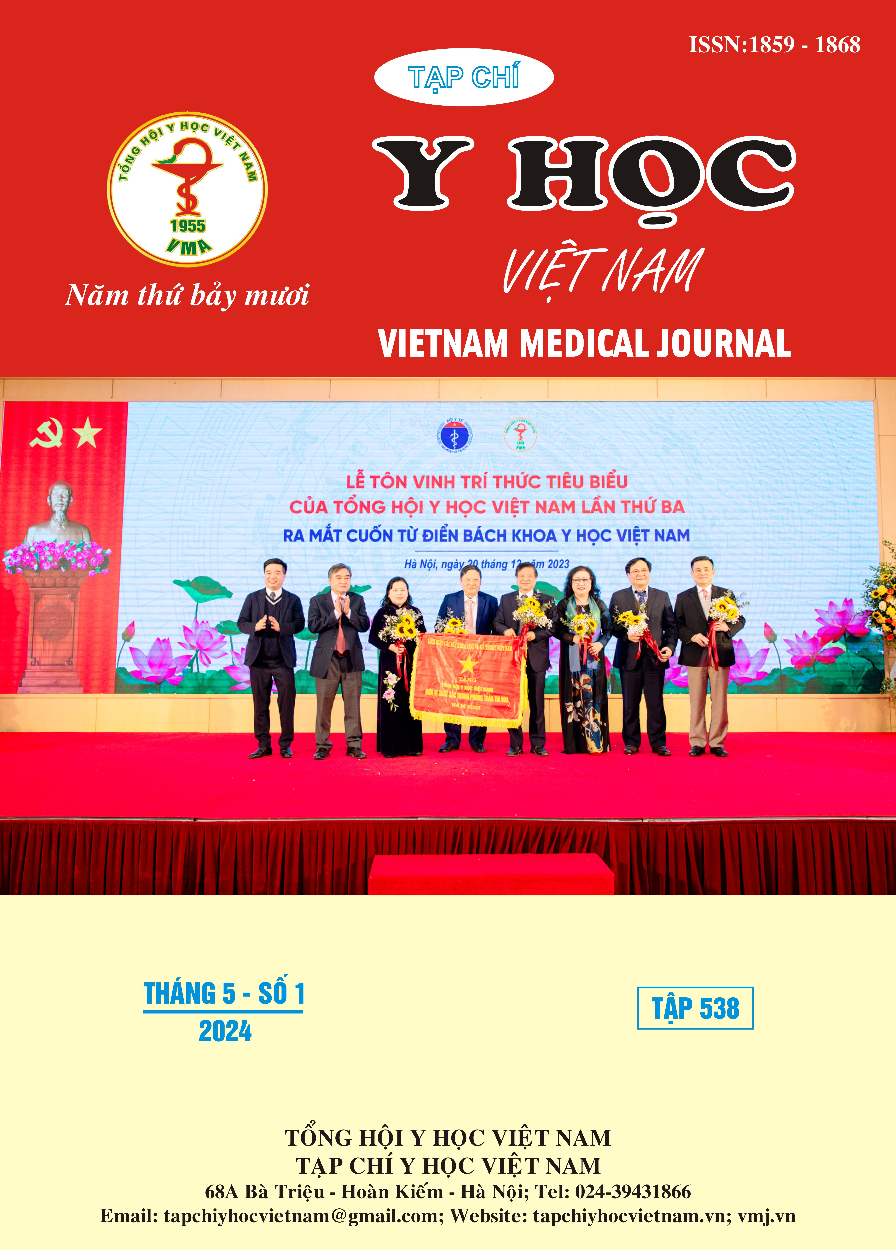EVALUATE THE TREATMENT RESULTS OF DRY EYE CAUSED BY BLEPHARITIS AT VINH MEDICAL UNIVERSITY HOSPITAL
Main Article Content
Abstract
Objective: to evaluate the treatment results of dry eye caused by blepharitis at Vinh Medical University Hospital. Method: Prospective, descriptive and non controlled study based on 64 eyes of 32 patients with dry eye due to blepharitis at Vinh Medical University Hospital. Results: The study group encountered more women (78.1%), men 21.9%, average age was 48.5±8.1 years. Evaluating the general results of blepharitis treatment, cure is about 78.1% but there is a recurrence rate in the 2nd and 3rd months. Evaluating dry eye treatment: After 3 months of treatment, there are 87,5% of patients' symptoms improved well, and 12,5% of patients rated no improvement. The number of patients diagnosed with crust eye with Schimer I test result <10mm gradually decreased through follow-up visits, the number of normal patients with result >10mm gradually increased, the difference before treatment and 1 month, 2 months and 3 months after treatment is statistically significant with p<0.05. The number of dry eyes patients with BUT ≤ 5s gradually decreased with follow-up visits, patients with TBUT > 5 seconds gradually increased after 1 month, 2 months and 3 months, the difference is statistically significant with p<0.05. OSDI score for assessing ocular surface damage gradually decreased through follow-up visits after 1 month, 2 months and 3 months of treatment, the difference was statistically significant with p < 0.05. The rate of high OSDI scores gradually decreased, the rate of low OSDI score increases gradually increased, the difference is statistically significant with p<0.05. Conclusion: After treatment: Physical symptoms decrease quickly, then slowly and may recur in the second month. Physical symptoms often decrease and disappear. Therefore, the treatment process must be persistent, prolonged and coordinated in treating both blepharitis and dry eyes.
Article Details
Keywords
dry eye disease, blepharitis.
References
2. Trần Thị Minh (2016), Nghiên cứu đặc điểm lâm sàng và kết quả điều trị viêm bờ mi do nấm tại bệnh viện Mắt Trung ương, Luận văn Chuyên khoa II, Trường Đại học Y Hà Nội.
3. Tạ Thị Ngọc (2019), Đặc điểm lâm sàng, cận lâm sàng và kết quả điều trị viêm bờ mi do Demodex bằng Ivermectin, Luận văn Thạc sĩ Y học, Trường Đại học Y Hà Nội
4. Phạm Thị Khánh Vân (2014), "Hội chứng khô mắt", Nhãn khoa tập 2, ed.TS.Đỗ Như Hơn. Nhà xuất bản y học Hà Nội. p95.
5. Sullivan D.A, Sullivan B.D, Evans J.E, et al. (2002). Androgen Deficiency, Meibomian Gland Dysfunction, and Evaporative Dry Eye. Ann N Y Acad Sci, 966(1), 211–222.
6. Đinh Đăng Tùng (2015), "Mô tả đặc điểm lâm sàng của rối loạn chức năng tuyến Meibomius trên bệnh nhân khô mắt tại bệnh viện Mắt Trung ương năm 2015", Luận văn Nội trú, Trường Đại học Y Hà Nội.
7. Craig JP, Nichols KK, et al (2017), TFOS DEWS II Definition and Classification Report; Ocul Surf, 15(3):276 – 283.
8. Huỳnh Phúc Hoàng (2023), Khảo sát sự mất ổn định của phim nước mắt ở bệnh nhân sau phẫu thuật Phaco, Tạp chí Y Dược học Phạm Ngọc Thạch; 2(2): 110-119.


